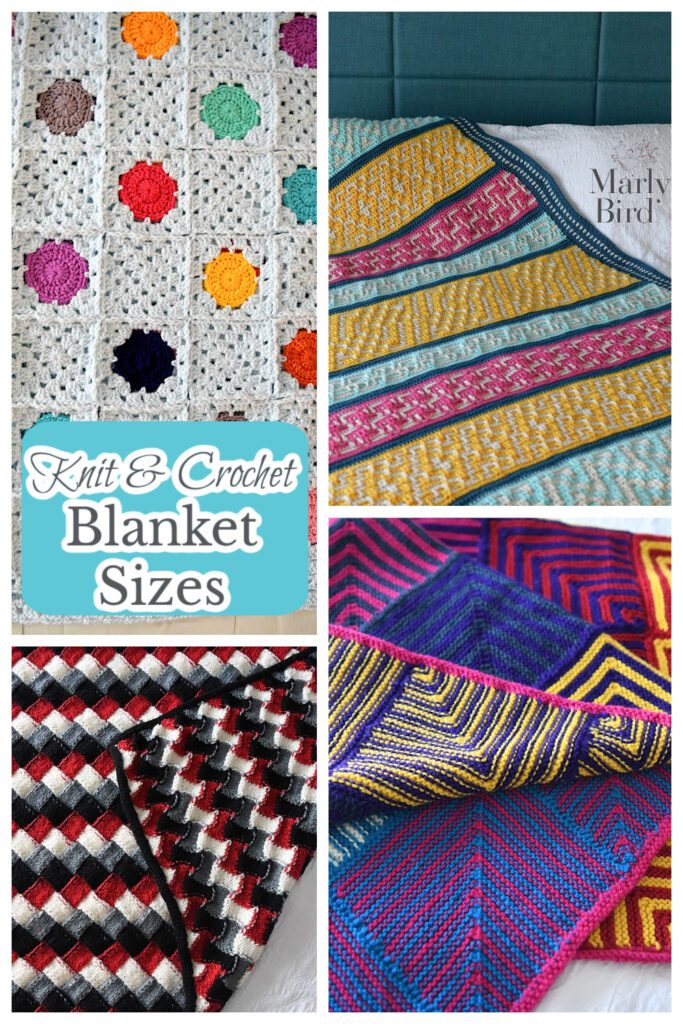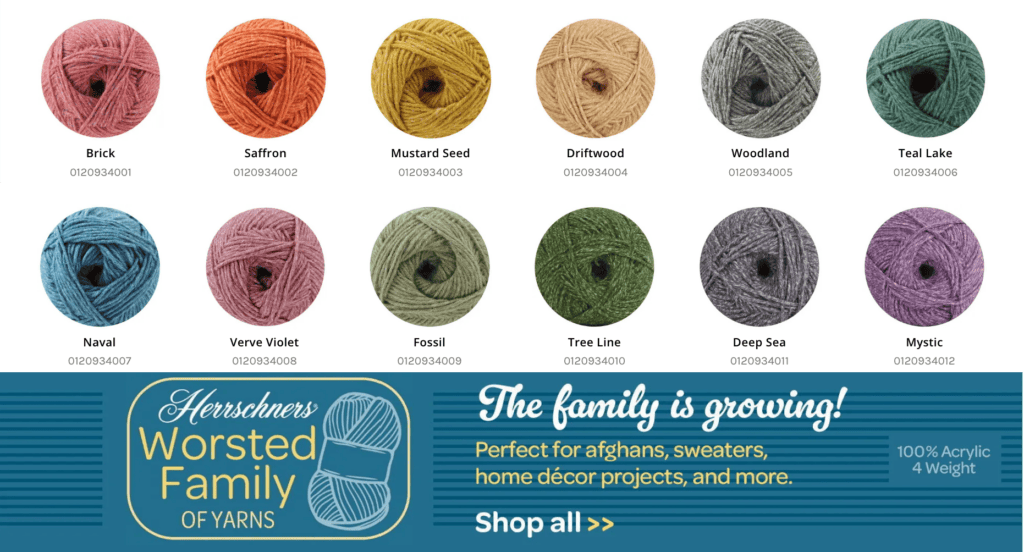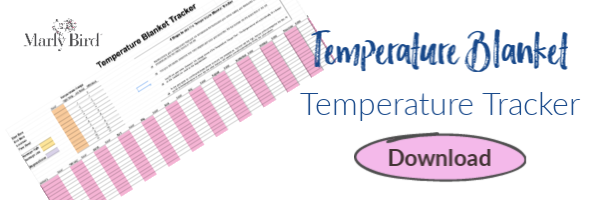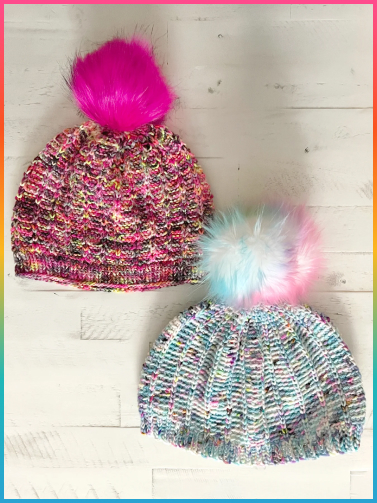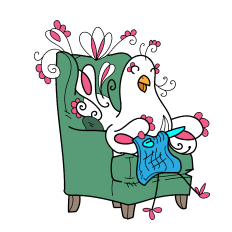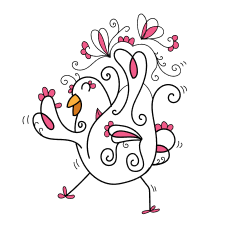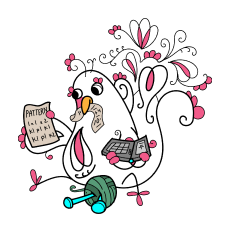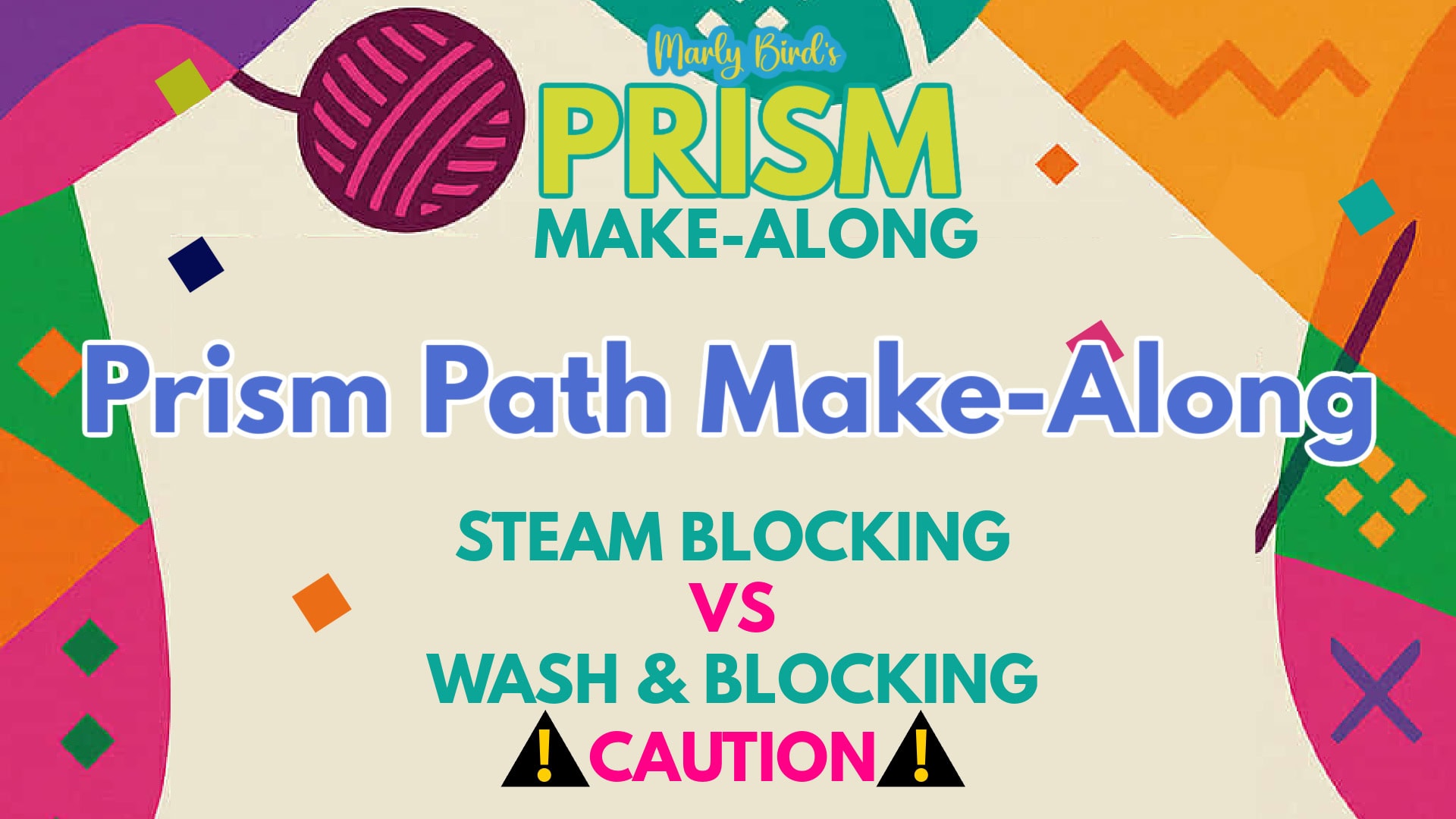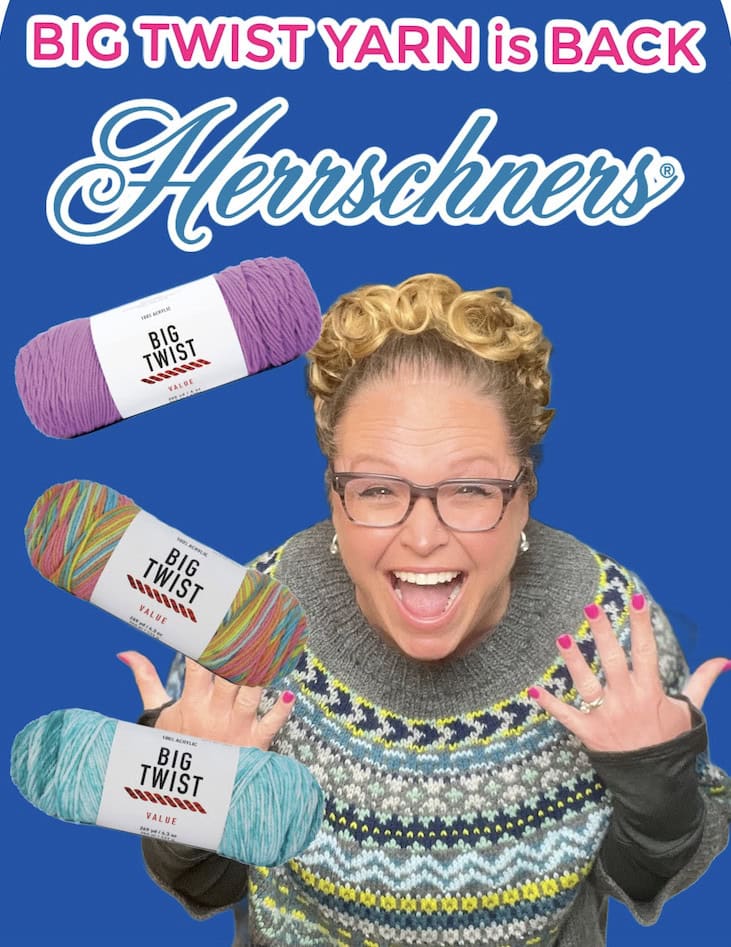What’s The Best Temperature Blanket Stitch?
There are so many things to plan out when you’re going to make a knit or crochet temperature blanket. You have to choose your temperature blanket colors and yarn. Moreover, you need to pick the time period and location for your data. You also need to choose a temperature blanket pattern or select the temperature blanket stitch that you want to use. Oftentimes, people choose to make a temperature blanket with single crochet, row after row showing the temperature for each day. Knitters might choose a simple garter stitch. However, don’t be afraid to step outside of the box and come up with a different temperature blanket stitch for a more interesting design.

*THIS POST CONTAINS AFFILIATE LINKS. BY CLICKING ONE OF THESE LINKS AND MAKING A PURCHASE A SMALL PORTION COMES BACK TO THE BLOG. THE PRICE YOU PAY WILL NOT CHANGE. THANK YOU FOR YOUR SUPPORT OF THE BLOG.*
What Is a Temperature Blanket?
A temperature blanket is a creative project that uses color to represent the daily temperatures of a specific year. It’s like a visual diary that combines your love for crafting with the beauty of nature’s changing seasons. Each row or block corresponds to a day’s high or low temperature, creating a one-of-a-kind design.
Temperature blankets have gained popularity among knitters and crocheters because they’re not only beautiful but also meaningful. Whether you’re documenting a milestone year, like the year of a wedding or baby’s birth, or simply tracking a random year for fun, this project offers a personal and artistic way to capture memories. Look at the temperature scarf Marly Bird made.
For those new to the idea, you can check out my post on how to to choose a crochet blanket size for foundational tips that apply to projects like this one.
Why Make a Temperature Blanket?
A temperature blanket is more than just a year-long craft project; it’s a keepsake filled with memories. Here are a few reasons you might love making one:
- Commemorate a special year: Whether it’s the year you got married, a baby was born, or a major life event occurred, a temperature blanket becomes a cherished reminder of that time.
- Challenge yourself creatively: Long-term projects can be intimidating, but they’re also incredibly rewarding. This is a fun way to build consistency and explore your craft daily or weekly.
- Create something unique: No two temperature blankets are alike! Your blanket will tell the story of your local weather, with colors and patterns uniquely yours.
If you’re looking for inspiration for other milestone projects, check out my knit and crochet blanket pattern collection.
How to Plan Your Temperature Blanket
Planning your temperature blanket is just as fun as making it. Here’s how to get started:
Choose a Color Palette
The colors in your temperature blanket will set the tone for the whole project. Think about:
- Rainbow gradients: Classic and vibrant, these work beautifully for a full spectrum of temperatures.
- Seasonal tones: Earthy hues like rust, gold, and deep blue can reflect the seasons in a more subtle way.
- Custom color stories: Tailor your palette to reflect personal preferences or themes, such as beach tones or fiery sunsets.
I recommend browsing yarns like WeCrochet Brava, Herrschners Worsted 8 Heathers, Red Heart Super Saver or Lion Brand Vanna’s Choice, which offer a variety of colors and are perfect for large projects. Need help with color selection? My guide to Fair Isle crochet colorwork basics can help!
Yarn Considerations for Temperature Blankets
Choosing the right yarn is essential for the success of your project. Here are some key factors to keep in mind:
Best Types of Yarn for Crochet Blankets and Knitting Blankets
For temperature blankets, durability is key. Look for easy-care yarns like acrylic or acrylic blends. They’re machine washable, hold up well over time, and come in a variety of colors. Some top picks:
- WeCrochet Brava
- Herrschners Worsted 8 Heathers
- Red Heart With Love
- Lion Brand Pound of Love
- Caron One Pound
Budget-Friendly Yarn Options
If you’re crafting on a budget, look for yarns like Bernat Super Value or check local craft store sales. Buying in bulk online can also save you money—check out my Amazon storefront for recommended yarns and tools.
How Much Yarn Do You Need for a Blanket?
Estimating yarn amounts can feel tricky, but here’s a good rule of thumb: Start with one skein of each color in your palette. You can always buy more if needed, but having extras of frequently-used colors (like mid-range temperatures) will save you from mid-project headaches.
Pro tip: Join the Marly’s Minions BiCrafty Community on Facebook for advice from others making temperature blankets.

Tools and Accessories for Your Temperature Blanket
Having the right tools can make your temperature blanket journey smoother and more enjoyable.
Crochet Hooks or Knitting Needles
Choose tools that match your yarn’s weight. For worsted weight yarn, a size H (5mm) crochet hook or US 8 (5mm) knitting needles are great starting points. If that creates a fabric that is too stiff then go up in size.
Row Counters or Apps
Track your progress with a row counter or apps like Stitch Fiddle. Staying organized helps you avoid mistakes and ensures you can pick up where you left off.
Storage Solutions
Temperature blankets require a lot of yarn, so keeping your stash organized is a must! Use storage bins, clear bags, or yarn bowls to keep everything tidy. I recommend using ErinLane Bags Stash Finder bags as a great storage solution.
Determine Your Temperature Ranges
Once you have your colors, divide your local temperature range into segments. For example:
- 0–10°F: White
- 11–20°F: Light blue
- 21–30°F: Medium blue
- And so on!
Make sure to adjust ranges based on your area’s climate. You can even print a free tracker to stay organized—download a printable temperature blanket chart here.
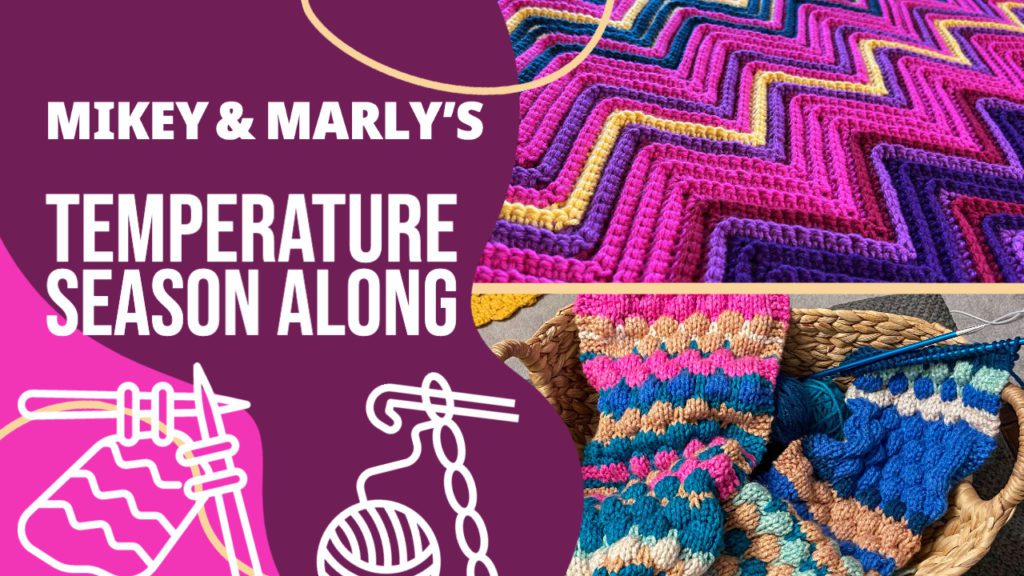
Temperature Blanket Stitch Patterns
With so many options of stitches for your blanket you will want to consider a few things. If you are making a crochet temperature blanket, then you’ll want to stick to shorter stitches in order to keep your blanket from getting too long and still recording all 365 days. Here are some suggestions of great stitches for your temperature blanket.
In Crochet:
You want to choose a simple, straightforward, short crochet stitch for your temperature blanket. However, this doesn’t mean that you need to stick to single crochet (even though it’s a perfectly good choice.) Here are some other great stitch options
In Knitting:
If you’re making a knit temperature blanket, you’ll also choose a straightforward design. Some great basic knitting stitches that work well in rows include:
Motifs and Other Designs
If you prefer to work something other than straight lines you could use one of the following techniques.
- corner to corner crochet
- mini squares (knit or crochet, one square for each day)
- chevron stitch pattern
- knit lace pattern
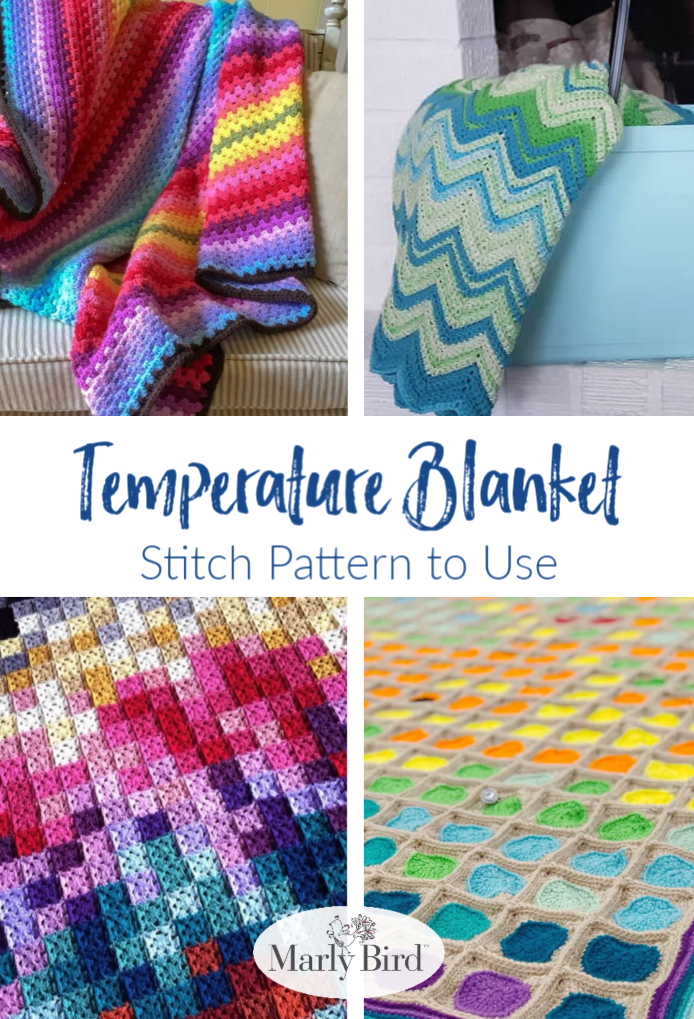
Resource: Temperature Blanket Tracker!
Want to grab an AMAZING temperature blanket tracker? Just use the button below to get access to the document. Make sure that you download a version to your own computer/Google Docs.
Additional Temperature Blanket Resources:
Start here to learn how to knit or crochet a temperature blanket. Other helpful posts:
- Choosing Time Period and Location for Temperature Blankets
- How to Choose Temperature Blanket Colors and Yarn
- How to Start a Temperature Blanket Anytime and Benefits of Doing So
- 33 Free Knit and Crochet Temperature Blanket Patterns
- 49 Free Granny Square Crochet Blanket Patterns
Making a temperature blanket is more than just a creative challenge—it’s a journey of crafting memories, one stitch at a time. Whether you stick to the traditional year-long format or try a variation like a seasonal wrap or mood tracker, the result is always a one-of-a-kind treasure. Along the way, you’ll improve your skills, stay inspired, and even join a supportive community of crafters who share your passion.
Remember, the key to a successful temperature blanket is planning, patience, and a willingness to adapt when challenges arise. With the tips and ideas shared here, you’re ready to tackle this rewarding project and turn your stitches into a work of art that tells your story.
If you’re ready to start your own temperature blanket, don’t forget to join the Marly’s Minions BiCrafty Community for encouragement and inspiration. Share your progress, ask questions, and cheer each other on as we craft our way through the year.
Happy stitching, and don’t forget to tag me @themarlybird on social media—I’d love to see your gorgeous blankets in progress!
xoxo Your BiCrafty Bestie,
Marly Bird

Categories: Crochet, Dibble Dabble Inspiration

